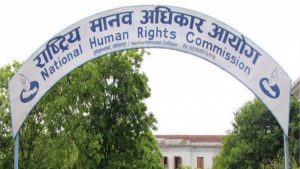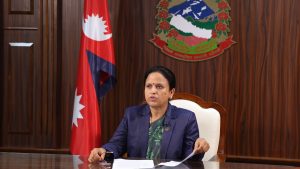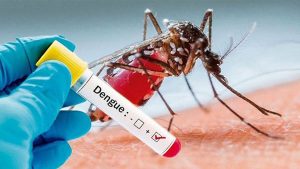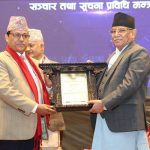
16 days of activism against GBV: 78.82 percent cases related to domestic violence

Despite the constitutional guarantee ensuring a life free of violence and coercion, the fiscal year, 2021/22 reported rampant cases of violence against women and girls (VAWG). Out of gender-based violence cases reported across the country in the FY, a whopping 78.82 percent are found to be domestic violence, according to the police.
In the sexual violence against women, 83.15 percent cases were committed by the people known to them with 64.22 percent victims being girls.
In the FY, the police registered 16,700 cases of domestic violence followed by 2,380 cases of rape, and 809 polygamies. Similarly, 655 cases of rape attempt were registered. According to data, 83.15 percent of sexual violence cases were committed by relatives and known people, and among them, 64.22 percent victims were girl child.
Categorically, Bagmati Province reported the highest- 4,626 domestic violence cases with 3,058 in the Kathmandu Valley alone followed by 4,473 in Madhes Province. Karnali Province reported the lowest 983 cases.
Bagmati Province tops the list with 588 rape cases as Kathmandu Valley alone reported 323 cases. Bagmati Province is followed by 512 in Koshi Province. Karnali Province reported the lowest 157 cases.
In terms of age group, the highest 28.31 percent of women and girls having experienced GBV were between the 19-25 age group followed by 14.24 percent of them between the 26-35 age group.
The actual figure could be higher as many GBV cases go unreported under various circumstances, said stakeholders attending a discussion organised here by the NGO Federation of Nepal, an umbrella organisation of NGOs working in various fields of social welfare and development in Nepal. The event was organised as part of the global 16-Days of Activism against GBV, 2023 that started on November 25 and is concluding on December 10.
The panel discussion with the theme of ‘Preventing Violence against Women and Girls: Policies, Investment and Role of CSOs’ had Nira Adhikari, Undersecretary at the Ministry of Women, Children and Senior Citizens, Shanta Laxmi Shrestha, CSO representative, and Sandesh Silpakar, representative of the Association of International NGOs in Nepal dwelt on policies, investment and role of CSOs in preventing VAWGs.
As the panelists shared, there are the economic and financial bearings of VAWGs.
In this connection, an IMF blog based on a 2022 research paper reports that an increase in violence against women by one percentage point is associated with a nine percent lower level of economic activity.
The World Bank’s Voice and Agency Report of 2014 states that the development costs of VAWG are substantial and close to average that global majority country governments spend on primary education.
Adhikari complained of low budget being allocated for the Ministry of Women, Children and Senior Citizen when it comes to battling VAWGs.
Budget is the foremost resource- be it managing workforces, empowering women and the institutions that look after affairs of women, children and senior citizens- she said. The laws and policies relating to women rights lacked effective enforcement, she pointed out. Awareness and internalisation among general people and people’s representatives is imperative, she underscored. She rued the government’s move of phasing out the institutions at the district level that look after affairs of women and girls.
Similarly, Shrestha seconded Adhikari in terms of low investment in fighting VAWGs. There is minimal investment when it comes to the degree of VAWGs, she said while claiming that CSOs were effectively conducting their watchdog role, and partnering in preventing VAWGs. According to her, togetherness against VAWGs would result in synergic effect.
Silpakar stressed the need for bringing along the youth with the campaign against VAWGs.
In combating GBV, the panel discussion underlined multifaceted challenges and advocated for strengthening legal and institutional frameworks, expanding access to support services, promoting prevention through social and behavioural change, enhancing data collection, monitoring and evaluation, and fostering stronger coordination and collaboration among the government and other stakeholders.
According to the World Health Organisation’s most recent estimates launched in March 2021, almost one in three women worldwide faces physical or sexual violence in her lifetime. Most of this is in the form of intimate partner violence, which means, women are at great risks from people they live with. In this regard, the South-East Asia Region ranks second highest with around 33 percent, according to the estimates.














Comments